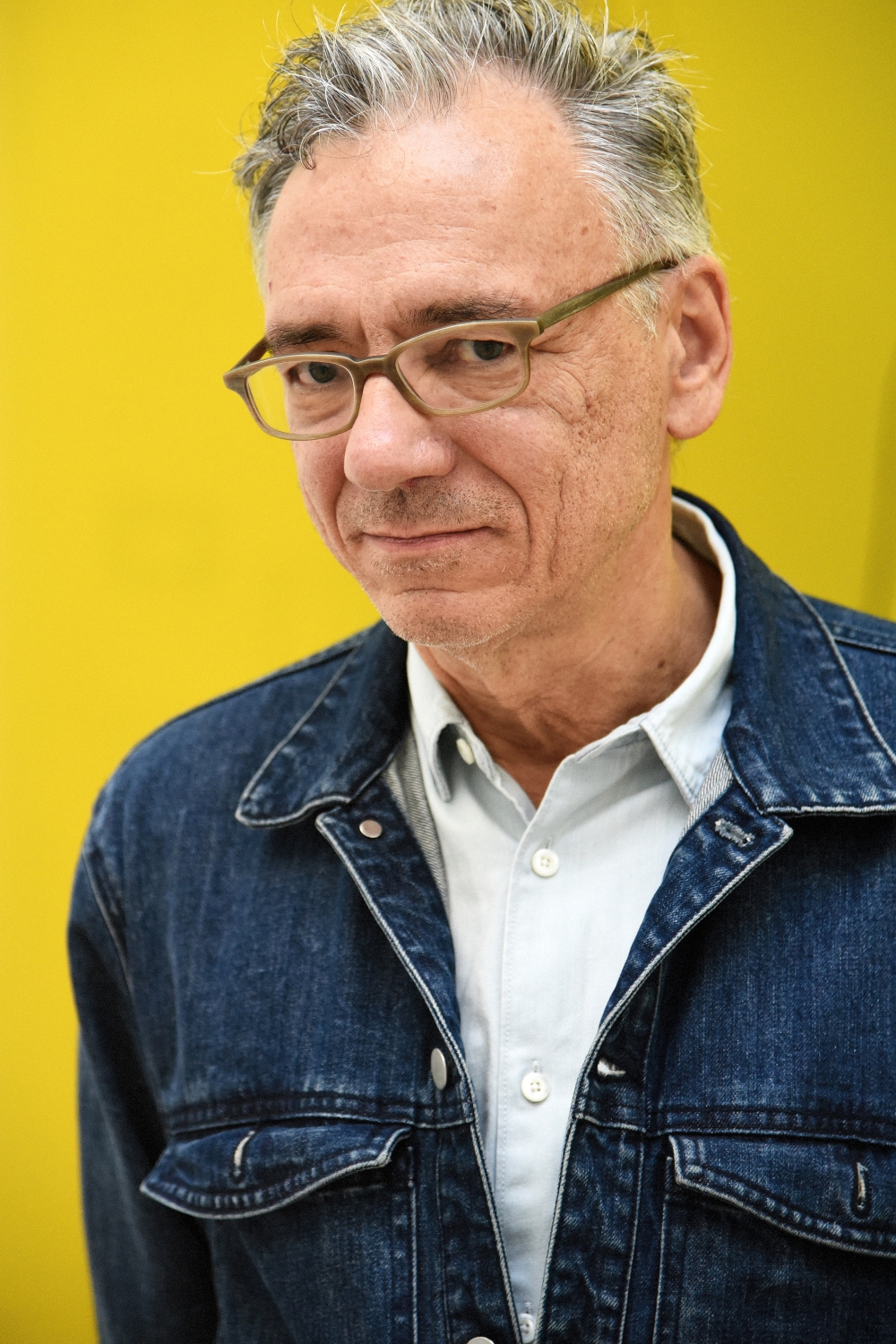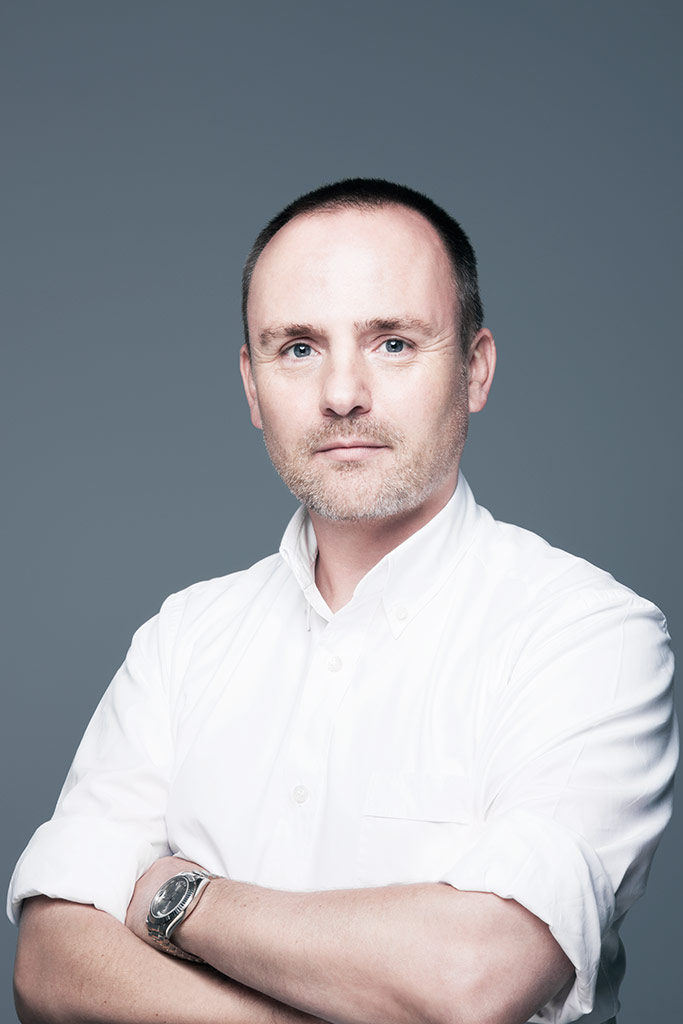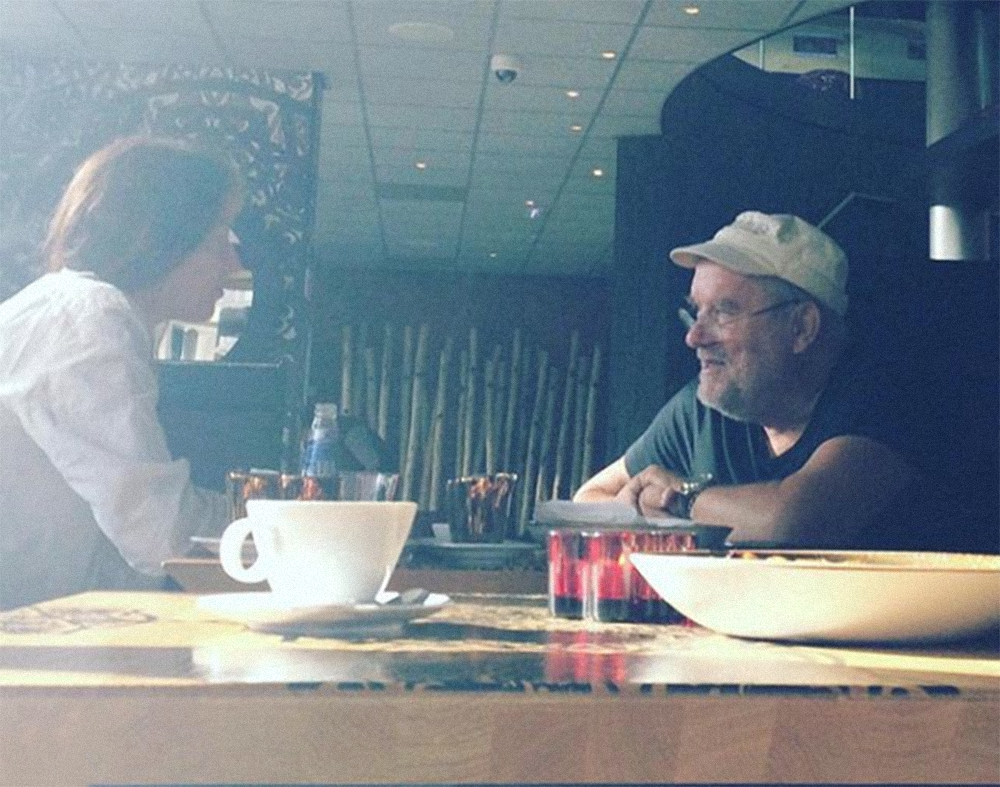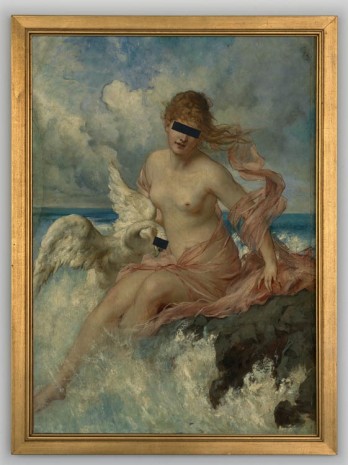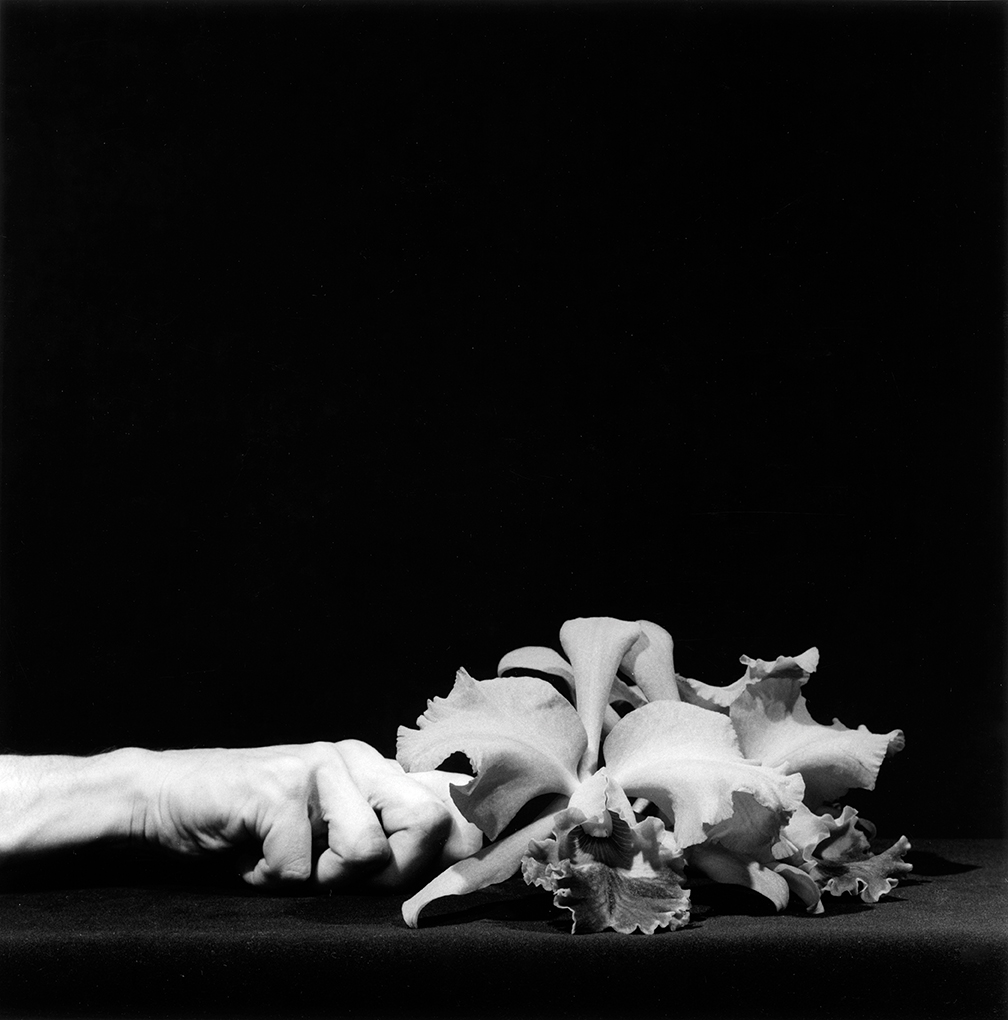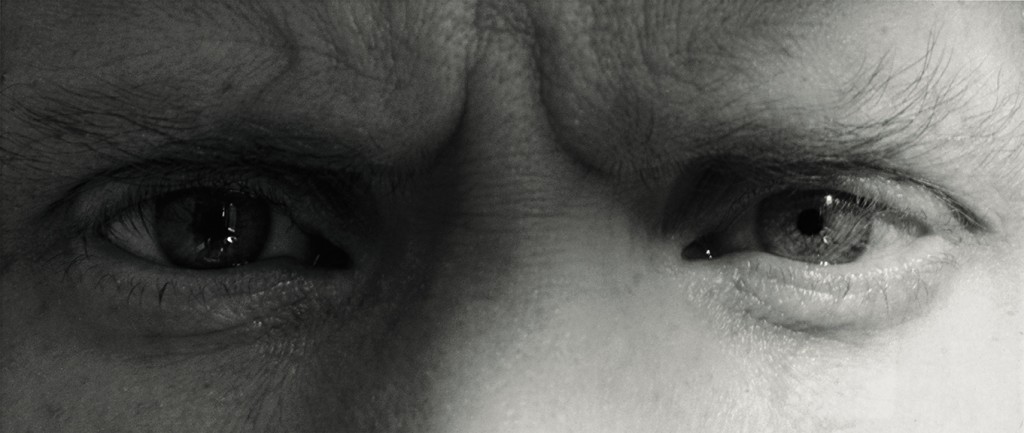PETER MARINO ON OBSESSION
By Crash redaction
PETER MARINO IS THE GUEST CURATOR OF « XYZ », THE LATEST EXHIBITION DEVOTED TO ROBERT MAPPLETHORPE AT GALERIE THADDAEUS ROPAC IN PARIS. AN INTERNATIONAL ARCHITECT AND INTERIOR DESIGNER, MARINO REVISITS SOME OF THE THEMES HE BELIEVES ARE FUNDAMENTAL TO THE ARTIST: BY APPLYING A SUBJECTIVE PERSPECTIVE, HE OFFERS A NOVEL TAKE ON MAPPLETHORPE’S OBSESSION WITH SEXUALITY. COMPOSED OF SEVENTEEN POLAROIDS AND SIXTY PHOTOGRAPHS SELECTED FROM VARIOUS COLLECTIONS, THE EXHIBITION EXPLORES THE AESTHETICS OF UNINHIBITED SEXUALITY AS A SYMBOL OF AN ERA WHEN SOCIAL MIXING WAS KEY.
Interview by Armelle Leturcq
Your exhibition is very strong… even shocking.
What did you expect from me? (laughs) The exhibition is surely very strong and critical – this was my intention. We will have to put a notice for the public before entering, just to warn people that the exhibition is composed of some strong photography about sexuality. Although I think that with technology everything has changed as everybody is more informed and people won’t react the same way as they would have in the past. I am more shocked today by what we can see on the Internet. Also the sense of censorship has changed. In 2016, it’s not the same any more. The computer has changed everything. This exhibition is my personal interpretation of Mapplethorpe’s work. I have spent six days at the Mapplethorpe Foundation. It is about his three portfolios: X, Y, and Z. I thought that was the closest to his own art so I wanted to put a little of me into it. What is really aggressive sex in his work? What are the most beautiful flowers in his work?
How did you discover Mapplethorpe’s work? Did you ever meet him?
I’ve met him once in my life, at a party. I didn’t know him; I’ve just met him. I discovered his work at the Robert Miller Gallery and I was quite impressed – I thought his work was very strong and very beautiful. It was in the 1970’s. It was one of his first exhibitions. He got a review in The Village Voice saying he was a new talent you should see.
Did you read the book Just Kids(1) by Patti Smith? It’s about her life in New York with Mapplethorpe. It’s amazing because you discover the process of his work, how he began as a painter.
Yes, I’ve read the book, and it’s beautiful. I found it so poetic; there is a lot of truth in it. After Just Kids I read the biography of Sam Wagstaff(2), Mapplethorpe’s partner. I met him; he was a huge photography collector. I have a big collection of American Silver because of him. This was a big part of his obsessions, which I discovered when I met him.
Wagstaff also had a great influence on Mapplethorpe’s work.
For sure, he was the one who used to be the curator. He was the one who gave intellectual rigor, stating by his support: “This kid is not producing porn, he’s producing art.” At the time, you needed someone of that stature, from a big family, a curator in museums. If your friends say your work is great, nobody listens; but if it’s a big curator, then this is great art.
He also pushed him to start photography. Wagstaff bought Mapplethorpe big format cameras.
Indeed, when he started he made only Polaroid: 100% abstract or 100% sex.
What do you like most about his work?
The classical division of black and white, as these colors create the composition. It is a reference to classical things. At that time, as an art student, you wanted to know and understand classical art but at the same time there were so many influences that came through. It was a confusing time: growing up between classical art and Jackson Pollock, you didn’t really know where to go. Suddenly, Warhol came and said, “I am doing my own thing: it’s Pop Art.” When you look back at it, the transition is really shocking.
Photography wasn’t considered an art: even Man Ray had trouble gaining recognition for his talent…
That is true, even though when you look back you have the greatest photographers working since the 1930s. I think Mapplethorpe was the link between what came before – Dada, Surrealism – and this new explosive generation of Thomas Struth, Andreas Gursky, and Candida Höfer, for example.
All these conceptual photographers are less expensive now.
I don’t know, because when I want to buy a Richard Prince piece, it’s still very expensive!
Richard Prince is not a photographer for me.
It is not because a painter doesn’t paint his own canvas that I wouldn’t call him a painter.
Yes, of course. Today a lot of artists produce their pieces in factories in China…
It’s funny: Andy Warhol was the first one who didn’t want to call his atelier “the studio,” but “The Factory.” He wanted everybody to have a work of art, and that’s why he decided to produce in mass. He was the first honest one. I believe he was the present and the future, while the other artists were very conservative.
Did you see the Warhol exhibition at the Musée d’Art Moderne? What do you think about it?
Yes I did, and it was a bit disappointing. I loved “The Shadows.” But it was a funny show because they decided to take a lot of lithographs; this was very strange to me. I thought the videos were good because they put you in the mood of the period; I liked it because it was atmospheric, it showed an environment. I thought they just could have had better paintings of Andy.
What’s interesting in Just Kids is to see the relationship between Mapplethorpe and the Factory. He was genuinely fascinated by Warhol.
Andy was the king of pop in New York and he had his own royaume. It was a big moment. The 1970s were the biggest time for social mixing that I’ve ever seen in my life. All the rich came downtown to meet all the poor artists. Each group gave what they had to the others; it was a fantastic moment of sharing. It all ended in the 1980s because of AIDS, and I don’t think the world will see this social mixing again. In fact I see the world going the other way, where the rich are further away. Because I am from that generation, I only like that mix.
Mapplethorpe is fascinating because of his character. What do you think of his personality?
In that period it was more normal than it might look now. The 1970s were a sexual revolution. It was not so exceptional as it might seem to do provocative art. But what was great is that he could take his sexual passions and his sexual obsessions to create real art and real feelings. When you see his art you understand this is not pornography, this is something this person felt very strong about: he wanted to create beauty and at the same time he was obsessed by the sex of men. I think at the end his obsessions let him make great art.
In Just Kids we don’t see that part of his life very much: the fact that he was completely obsessed by sexuality.
I agree with you, my mission was to show his work to the public in a different way. I gave my interpretation of the three boxes that he did: X, Y, and Z. I imagined having a conversation with Mapplethorpe. I wanted a strong and aggressive sex book. I tried to show flowers that are not completely pure; I’ve tried to explore the photos that are not well known. Now, I might say something that will be shocking: the sexes he chose to photograph are beautiful – his art is always driven by aesthetics.
Are there any other photographers that you really like?
The photographers that I collect are: Charles Jones, who was born in 1905 and was obsessed with vegetables, and Eugène Atget, who photographed Paris so much. I love obsessions and I think this is the path to all good art.
How do you expect audiences will react to the exhibition?
I really hope they just see it as a magnificent obsession, that his work is really beautiful. If I have to be honest, if I find a big reaction against the show, I will have been wrong about what I considered the very strong influence of the Internet on everybody who is intelligent and curious. I believe this is the only subject you can look at as his main art, but I could be wrong. I think it was time to show what I consider Mapplethorpe’s obsession, a theme that the exhibition at the Grand Palais tended to avoid. Also the Musée Rodin showed sculptures, and these were incredibly beautiful, but nobody was really taking on his obsession with sex photography. The subject is very strong and the shots have never been shown. However, I believe this is something that could shock my generation, not the Internet generation. We will see.
You work as an architect, not only for fashion…
I don’t work only for fashion, we also do private homes and I like doing that. It can be buildings, hotels, etc. In my company there are one hundred and twenty architects working with me. One of my latest projects involved two buildings for Samsung. However I’ve been working with fashion houses for a long time: I’ve worked with Chanel since 1985 and with Dior since 1994. One of my upcoming projects will be for Chanel, namely the new boutique rue Cambon. I am also working on the big Louis Vuitton store on Rue Saint-Honoré.
Interview from Crash 75
“XYZ”
An exhibition dedicated to Robert Mapplethorpe and curated by Peter Marino
Galerie Thaddaeus Ropac Marais
From January 28th to March 5th, 2016
7 rue Debelleyme 75003 Paris
(1) Patti Smith, Just Kids, Ecco Press.
(2) Philip Gefter, Wagstaff: Before and After Mapplethorpe: A Biography, Liveright Publishing.
All pictures:
Courtesy Galerie Thaddaeus Ropac, Paris/Salzburg
© Robert Mapplethorpe Foundation







